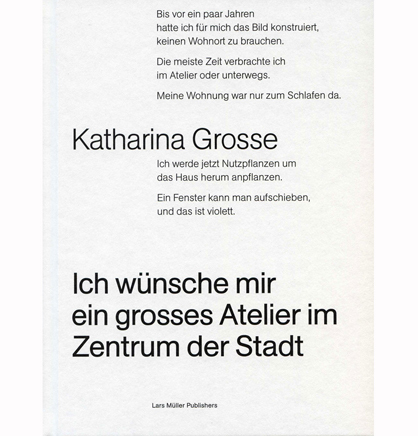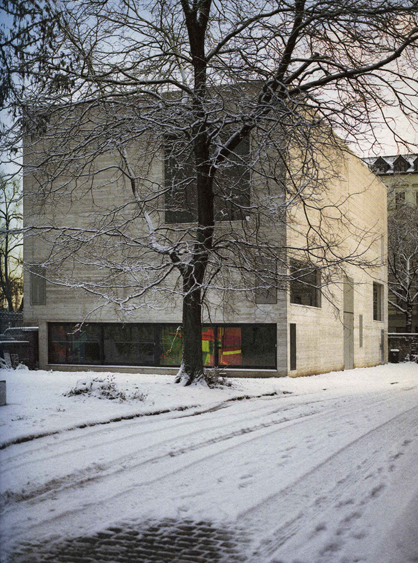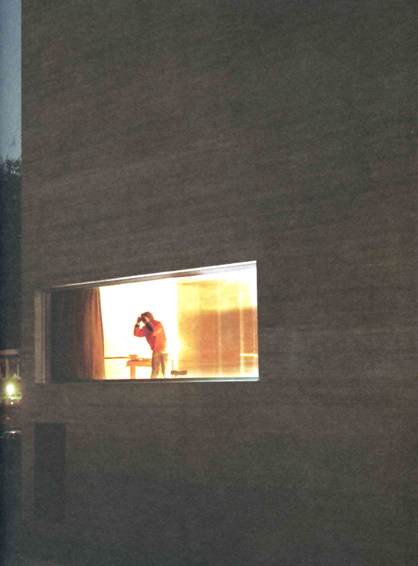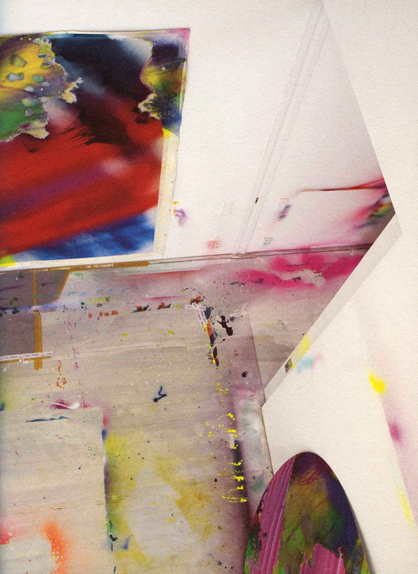Katharina Grosse. I'd like a large studio in the centre of town
Texte par Susanne Junker
Berlin, Allemagne
02.06.09
The book can be read as a kind of continuation of the title, in that it is a monologue by the artist Katharina Grosse about building a house and about her own house, a highly personal description of thoughts and perceptions.
The book can be read as a kind of continuation of the title, in that it is a monologue by the artist Katharina Grosse about building a house and about her own house, a highly personal description of thoughts and perceptions: "The most attractive thing about the house is the way your perception of space and the atmosphere are altered by the changes in the daylight. This is what I had least been able to imagine beforehand."
Her house, an artist's dwelling in that it combines living accommodation and studio, is located in one of those secluded and mysterious corners of Berlin full of high chestnut and maple trees, old-fashioned red brick buildings which are the remnants of former Prussian barracks, close to the industrial wasteland along the canal, in the neighbourhood of architects Sauerbruch Hutton and – until recently – the artist Olafur Eliasson as well as the Hamburger Bahnhof museum of contemporary art with its Rieckhallen exhibition building. This no-man's land, which was once in a peripheral location in West Berlin close to the Wall, now finds itself within walking distance of Berlin's main railway station in the heart of the city – it doesn't get any more central than this.
The architects Ute Frank and Georg Augustin have created an austere cube of exposed concrete with external dimensions of 12.5 x 25 x 12.5 m. Seen in reality the house makes a more delicate impression and merges into the urban landscape more naturally than the photos would suggest. Georg Augustin explains: "Exposed concrete as a material for the external skin of the building is our response to the specific character of these Prussian brick buildings, which is created by the combination of heavy mass and the delicate, filigree nature of the texture of the wall. (...) In our perception the structure of the building expresses the tension between the mass of its simple geometric form and the skin stretched tight across its complex spatial structure. This spatial structure can be experienced from the outside. Areas of glass and ventilation flaps situated across the corners of the walls form clearly defined spatial levels which are superimposed on the areas of space that we can see into and see through. This principle of spatial interlinking, which highlights the multiple ways in which the studio can be experienced and used, was the basic criterion which Katharina Grosse agreed with us for the design of the house."
The photos by Werner Huthmacher and Heji Shin take us on a virtual tour of the house and reveal the different colours and moods created by both daylight and darkness in a memorable way. In addition to floor plans and cross sections, a number of essays contribute to our insight into the project, in particular the text by Philip Ursprung about artists' houses, lofts, lifestyle and the ambivalent role of the artist in society. The result is not just outstanding architecture but also, in the shape of this book, a wonderful portrait of a highly individual house.
Katharina Grosse, Shadowbox at the Temporären Kunsthalle Berlin, 2009, photo Jens Ziehe, © Temporäre Kunsthalle Berlin / Katharina Grosse
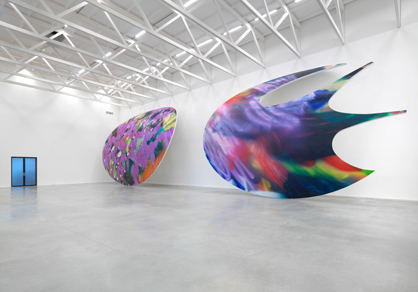
Katharina Grosse, Shadowbox at the Temporären Kunsthalle Berlin, 2009, photo Jens Ziehe, © Temporäre Kunsthalle Berlin / Katharina Grosse
×Until mid-June Katharina Grosse's work entitled "Shadowbox" is on show at the 'Temporäre Kunsthalle' in Berlin. The work consists of four almost 9 m high ellipses made of rounded and perforated rigid foam, which lean against the inner walls of the Kunsthalle and have been painted in vivid colours with her characteristic spray painting technique. This wild explosion of colour in the snow-white box stimulates not just our perception of colour, light and space, but also encourages us to play with ideas about architecture, sculpture, painting and objects. Katharina Grosse: "The shadowbox is an open system – painting, thinking and acting in it mean that there is no reality which is more real than possibility itself."
Katharina Grosse, Shadowbox at the Temporären Kunsthalle Berlin, 2009, photo Jens Ziehe, © Temporäre Kunsthalle Berlin / Katharina Grosse
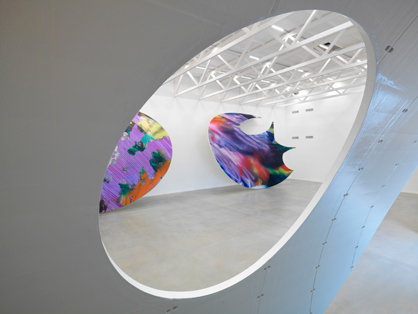
Katharina Grosse, Shadowbox at the Temporären Kunsthalle Berlin, 2009, photo Jens Ziehe, © Temporäre Kunsthalle Berlin / Katharina Grosse
×Katharina Grosse, Shadowbox at the Temporären Kunsthalle Berlin, 2009, photo Jens Ziehe, © Temporäre Kunsthalle Berlin / Katharina Grosse
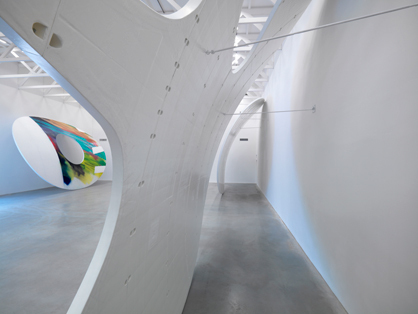
Katharina Grosse, Shadowbox at the Temporären Kunsthalle Berlin, 2009, photo Jens Ziehe, © Temporäre Kunsthalle Berlin / Katharina Grosse
×Facts
Author: Katharina Grosse (ed.)
144 pages, 120 illustrations
17.5 x 23.5 cm, hard cover
Verlag Lars Müller Publishers, CH-Baden 2009
Publisher's recommended price: 29.90 EUR
ISBN 978-3-03778-168-5
Text German
